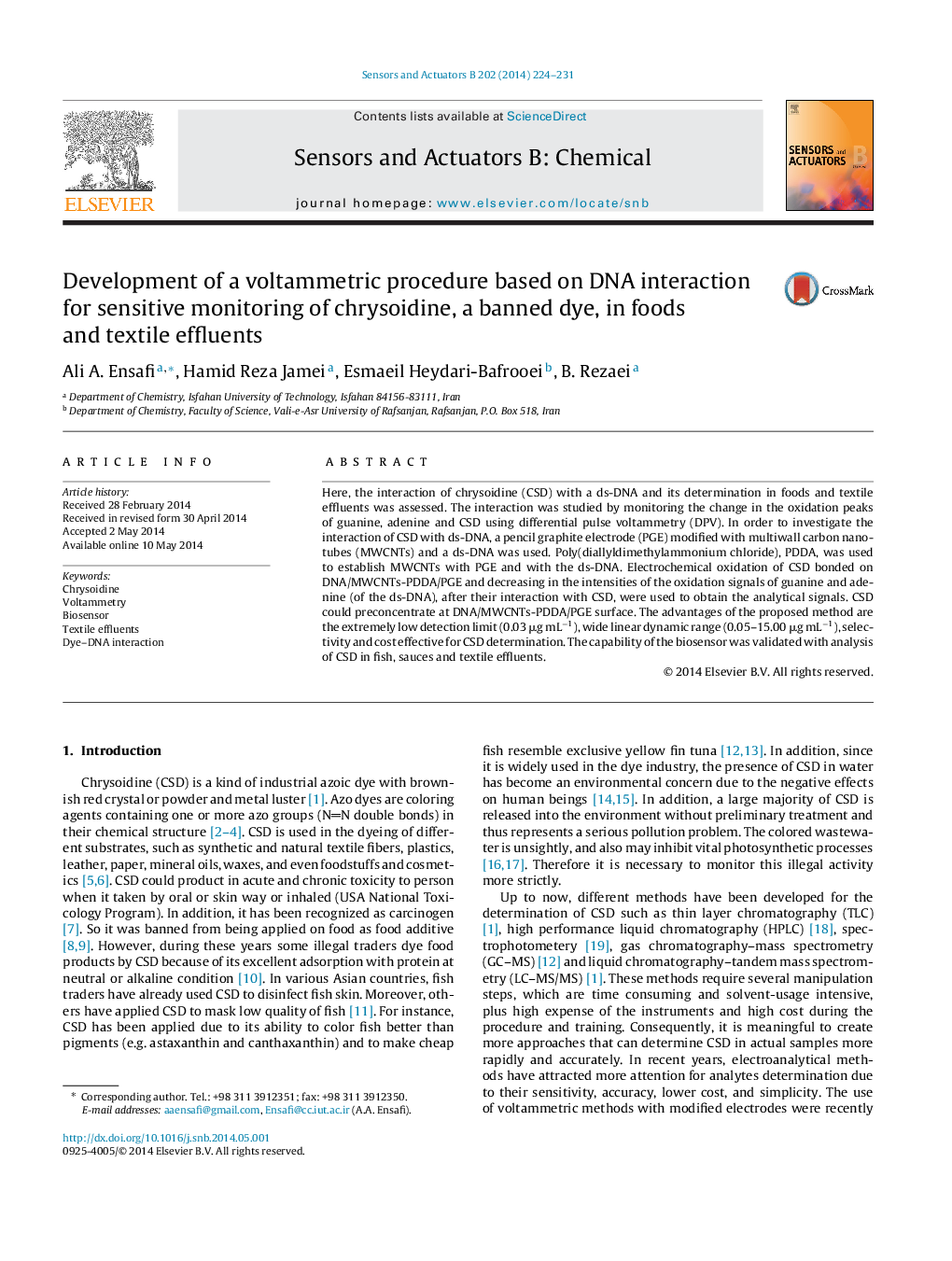| کد مقاله | کد نشریه | سال انتشار | مقاله انگلیسی | نسخه تمام متن |
|---|---|---|---|---|
| 742668 | 1462088 | 2014 | 8 صفحه PDF | دانلود رایگان |

• A biosensor was used to study the interaction of chrysoidine with ds-DNA.
• The interaction was studied by monitoring the change in the oxidation peaks of guanine, adenine and chrysoidine.
• A pencil graphite electrode modified with MWCNTs was used to prepare the biosensor.
• The method has wide linear dynamic range with detection limit as low as low as 0.03 μg mL−1 chrysoidine.
Here, the interaction of chrysoidine (CSD) with a ds-DNA and its determination in foods and textile effluents was assessed. The interaction was studied by monitoring the change in the oxidation peaks of guanine, adenine and CSD using differential pulse voltammetry (DPV). In order to investigate the interaction of CSD with ds-DNA, a pencil graphite electrode (PGE) modified with multiwall carbon nanotubes (MWCNTs) and a ds-DNA was used. Poly(diallyldimethylammonium chloride), PDDA, was used to establish MWCNTs with PGE and with the ds-DNA. Electrochemical oxidation of CSD bonded on DNA/MWCNTs-PDDA/PGE and decreasing in the intensities of the oxidation signals of guanine and adenine (of the ds-DNA), after their interaction with CSD, were used to obtain the analytical signals. CSD could preconcentrate at DNA/MWCNTs-PDDA/PGE surface. The advantages of the proposed method are the extremely low detection limit (0.03 μg mL−1), wide linear dynamic range (0.05–15.00 μg mL−1), selectivity and cost effective for CSD determination. The capability of the biosensor was validated with analysis of CSD in fish, sauces and textile effluents.
Journal: Sensors and Actuators B: Chemical - Volume 202, 31 October 2014, Pages 224–231